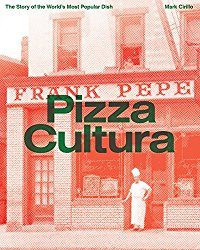
No one knows exactly who it was or when it happened. The only certainty is that someone in late 18th century Naples took a flatbread - the kind that had existed for millennia across the Mediterranean and Middle East - and topped it with tomato, a native plant of the Americas that had been brought to Europe two centuries earlier. Then in 1889, pizzaiolo Raffaele Esposito, in a fateful attempt to impress the visiting Queen Margherita of Savoy, added his own embellishments: mozzarella and basil. With the resulting "tre colori" pizza, an Italian icon was born.Within a few decades emigrating southern Italians brought pizza to the US, but it wasn't till post-WWII that its popularity exploded and mega-chains like Dominos and Pizza Hut spread American-style pizza across the globe. Like any global trend pizza has spawned a thousand variations to the delight of some and the horror of others - pizza bagels, pops, pockets and rolls, cheese-stuffed crust, and many more. But globalization also gives us access to Italian equipment, ingredients and expertise, so we can recreate an authentic napoletana experience outside of Italy like never before. Pizza Cultura takes in-depth look at one of the world's most beloved dishes. The history. The ingredients. The tools of the trade. Why it's so popular. What's authentic. And whether it matters. You'll also find nutritional information, pairing advice, celebrity quotes, chef recipes and a gallery of the best pizza art through the ages.